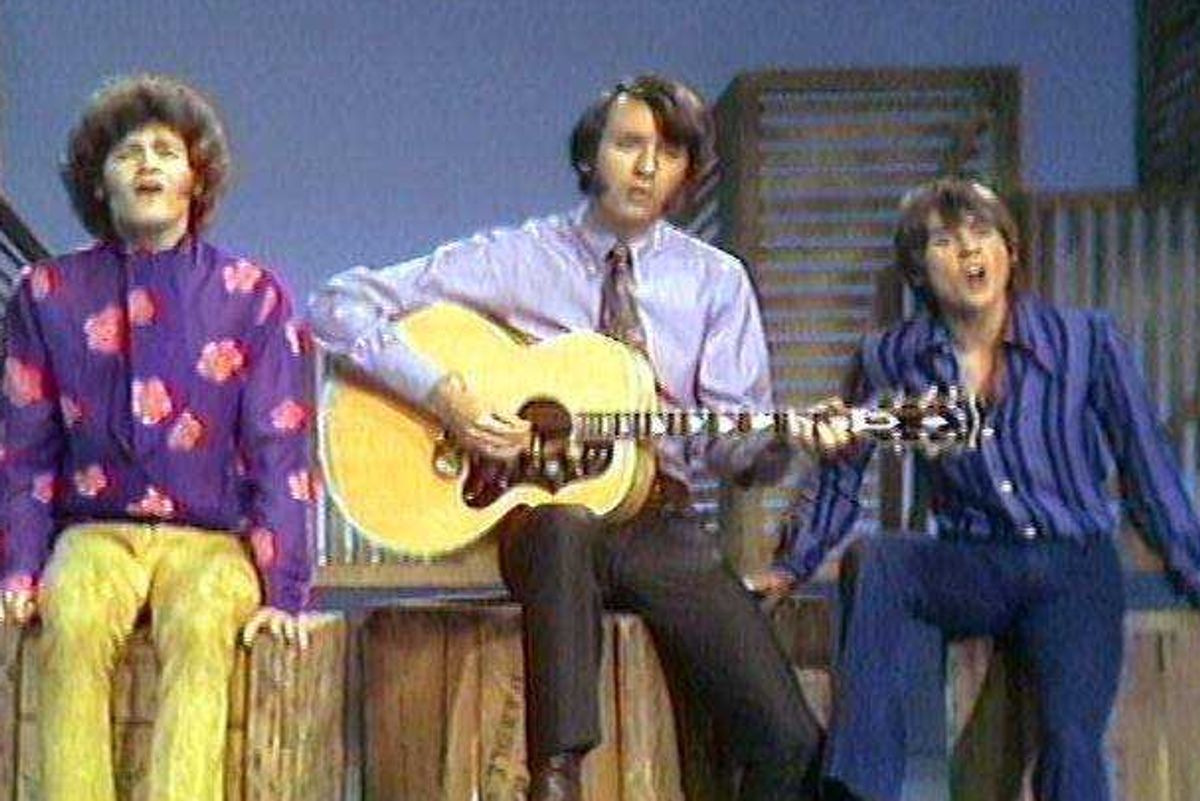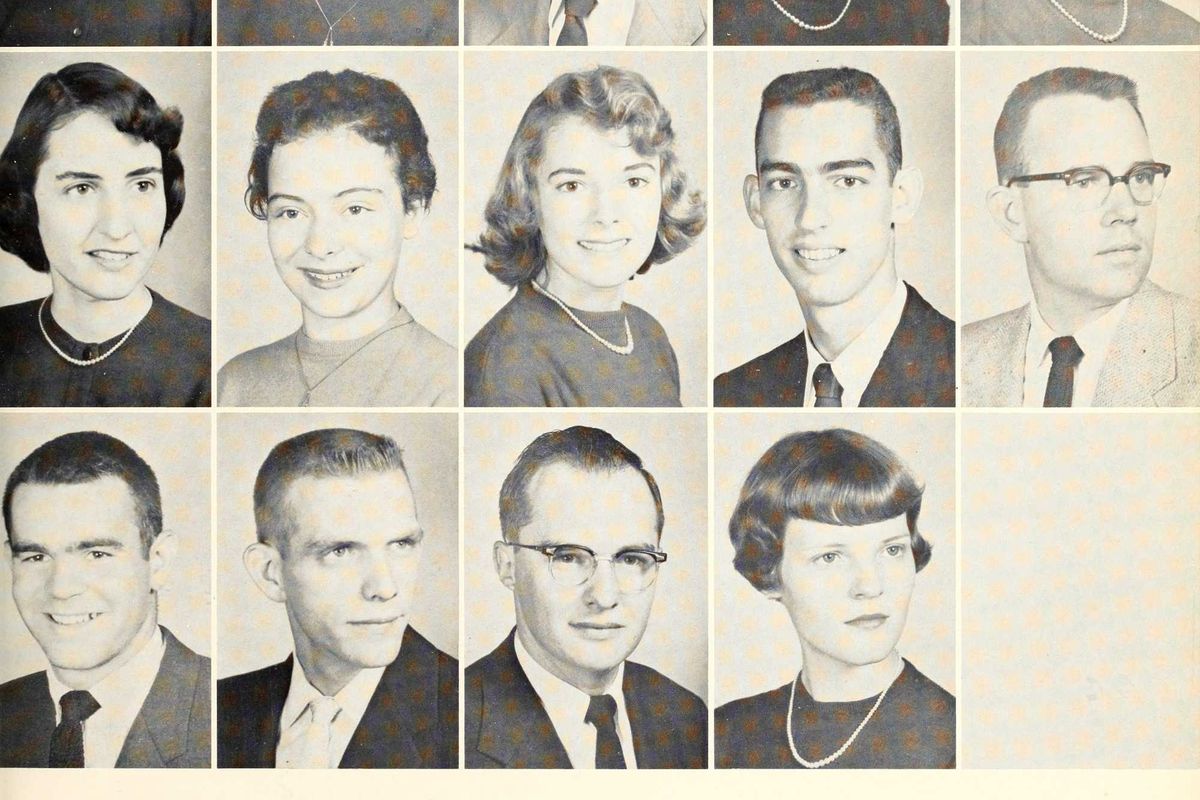Why is gun control such a tricky issue? This smart metaphor sums it up.
Right now, we live in a country where it's estimated there may be more guns than people.
The southeast Asian nation of Indonesia doesn’t just stretch across some 17,000 islands. It also straddles multiple tectonic plates.
Indonesia is home to more active volcanoes than any other country in the world — around 130 of them, in fact. Since 1900, nearly 20,000 people have been killed by volcanos in the area around Indonesia.
Mount Tambora in Indonesia. Image via Jialiang Gao/Wikimedia Commons.
Scientists working for the United Nations have also predicted a 30% likelihood that the coming century will see yet another volcanic explosion in Indonesia, probably on the scale of the 1815 eruption of Mount Tambora, one of the most powerful eruptions in recorded history, which was responsible for the deaths of up to an estimated 100,000 Indonesians.
But despite these dangers, the slopes of many of Indonesia’s volcanoes are far from empty.
Mount Dieng regularly vents lethal gases into the air; 149 people in a single village were killed because of those gases in 1979. Today, half a million people still live in high-risk areas around the volcano. Communities of potato farmers have steadily expanded up the slopes, getting ever closer to Mount Dieng’s highest-danger zones every year.
And nearly a million people live in the highest-danger zone areas of Mount Merapi, too, directly in the crosshairs of regular lava flows, mudslides, and other disasters.
Mount Merapi in Indonesia. Image by Brigitte Werner/Pixabay.
Only eight years after 69 people were killed by a volcanic dome collapse in 1994, 93% of residents told visiting scientists they did not fear being "personally affected" by such events. Even when the government issued warnings of imminent threats or tried to force farmers to evacuate during ongoing volcanic episodes, many villagers simply refused to leave the volcano.
This risky behavior might seem mind-boggling from the perspective of Americans, most of whom who don’t live or work near volcanoes that regularly spew lava.
But consider this: Experts estimate that in Indonesia, there are about one million guns in civilian hands (legally or otherwise), which translates into a rate of about .5 firearms per 100 Indonesians.
In the United States, estimates of civilian gun ownership vary, from 270 million civilians by one estimate to 310 million or more by another. Because gun data like that isn't officially gathered, it's really hard to put an exact number on it. But it's pretty clear we're just about at a rate of one gun for each individual American, well above the half a gun per 100 Indonesians.
So, it turns out, our behavior is quite risky, too.
Academics, politicians, and everyday Americans endlessly debate the links between gun ownership and specific kinds of gun violence – and even over what "counts" as "gun violence."
But if you flex your imagination and adopt the perspective of an outside observer, the relationship between Americans and their guns might look just as outlandish as that between Indonesian farmers and explosive the volcanoes on which they live.
In any given year, more than 30,000 Americans will have their lives ended by a bullet. Yet nearly 40% of Americans in 2013 reported that they or someone else in their household owns a gun. Plus, U.S. gun sales have hit record highs over the past decade, and they show no sign of slowing down. In a way, many Americans are living on a proverbial volcano.
Welcome to America. Image via Marcin Wichary/Wikimedia Commons.
"What are these people thinking?" a foreign questioner might ask. "Don’t Americans get that guns are risky?"
The answer to this question is complicated. When it comes to evaluating human choices in the real world, there is no single, universal yardstick for weighing "risk."
Humans aren’t coolly rational decisionmakers; our emotions and biases shape how we view the world. An impressive body of research suggests that humans have baked-in cognitive biases that don't help us when we're evaluating scenarios and weighing potential dangers. We often make misguided decisions because of those biases.
"Guns are objects invested with meanings, shaped by social norms and cultural attitudes."
Because of this, "risk" isn’t a given, objective quantity in the same way that odds are in a coin toss. Risk involves a perception; it's a subjective judgment on which we all have biases. Risk, to many people, feels relative and abstract. When Americans debate gun ownership solely in terms of risk, we’re often not really talking about risk at all or even numerical data. We’re actually fighting over what we think guns mean ideologically.
And that’s why the answer to this question of risk is also simple.
If risk is in the eye of the beholder, then different people will make different judgments about risks and danger. Their assessments will depend on where they come from, particularly in terms of race, gender, class, and geography.
Just like the potato farmers, most American gun owners are very acutely conscious of questions involving risk. In fact, gun ownership is usually all about weighing concerns about safety and danger, only according to many different calculi.
Let’s talk for a second about cognitive biases and risk perceptions.
In purely statistical terms, driving a car is immensely more dangerous than being a passenger in a plane.
This is actually more risky than flying in a plane, according to data. But which experience feels more scary? Photo via Jace Turner/Pixabay.
But, irrationally, most people are still more afraid of planes than cars. Why? Research shows us that people are more scared of being the object of circumstances beyond their power than they are afraid of risks they feel like they can control.
Turning to motivations for gun ownership, we see the cars-versus-planes bias again, particularly when it comes to fears about being defenseless against crime. 20 years ago, only a quarter of polled gun owners named "self-defense" as the primary reason for owning a gun. As of 2014, nearly half of polled gun owners cited protection as their primary motivation for buying a gun in the first place.
That crime rates have dropped sharply since the 1990s while the market for guns has only grown suggests that the perception of crime as a threat matters more than anything else when someone buys a gun.
We see this complicated question of risk and guns very clearly in the admittedly terrifying idea of home invasion, too.
Although only 7% of burglaries involve physical harm to a home’s occupants, having your private space violated by intruders, with you and ones you love left at their mercy, is rightly the stuff of nightmares.
Statistics can feel like bloodless abstractions compared to the viscerally horrifying image of the people you love, helpless and terrorized. Against the fear of abject helplessness, the decision to own a gun "just in case" gains attractiveness.
Let’s not forget that the media bears a degree of complicity here as well.
People prefer to consume information that fits their biases, and that information further cements those biases. Bad news captures our attention more than otherwise unremarkable stories. We also overvalue bad news and assume that it signals negative trends.
"The perception of crime as a threat matters more than anything else when someone buys a gun."
The morning newspaper doesn’t tell the story of everyone who went to work safely and then came home last night to have a quiet dinner with their family. Instead, a high-casualty mass shooting at an office or a horrific late-night home invasion will make headlines and fuel gun purchases. What’s more, of the 30,000-plus Americans who will be shot to death in any given year, a full two-thirds of those shots will be self-inflicted. But suicides are rarely reported while murders may receive extensive coverage.
For all of these reasons and more, people are likely to overestimate the likelihood of being the victim of a murder while neglecting the other risks associated with having a gun in the home.
As deadlocked fights over gun control suggest, debating data really won't get us anywhere.
Gun control isn't about the numbers; it's about feelings and perceived risks, and that is that. Guns are objects invested with meanings shaped by social norms and cultural attitudes.
Image screenshot via RidleyReport/YouTube.
It can be easy to project your own experiences and expectations onto those whose ways of life are different from your own, but race, class, and gender intersect with experiences of risk and vulnerability and make these kinds of issues much more complicated.
Back to the volcano-dwelling potato farmers of Indonesia. What can they teach us?
Researchers studying risk perception have become kind of obsessed with these people, and they’ve discovered a variety of explanations for the farmers’ risk attitudes and decisions: religion, cultural beliefs, education, views of governmental authority figures, and more.
Terraces in Indonesia. Photo via Globe-trotter/Wikimedia Commons.
But researchers have also noted a consistent theme in their interviews with the farmers: Most of these farmers are conscious of the risks they face, but they take them anyway.
Some of the farmers say they have no other choice: Dying in a toxic gas leak is only a possible risk, but the grim outcome of being unable to harvest their crops and feed their families feels like a certain risk. Their choice to live on a volcano may seem irrational from the outside, but — when put in terms like these — the decision seems to make all the sense in the world.
Indonesia isn’t America. Guns aren’t volcanos. And the decision to own a weapon is different in many ways from reckoning with ecological risks.
But something holds true across both cases: Numbers aren’t emotions, and our decisions aren’t reducible to statistics alone.
If we want to understand where other people are coming from in the gun control debate, understanding how perceptions are built is vital.
Right now, we live in a country where it's estimated there are more guns than people. This is a thorny problem, but I'd guess that solutions will only come from communicating well with each other well and from trying to grasp where different people are coming from — if only as a bare minimum first step.





 In a 4-day model, kids often (but not always) receive less instructional time. Photo by
In a 4-day model, kids often (but not always) receive less instructional time. Photo by 
 Smiling at work, checking messages during a break.
Smiling at work, checking messages during a break. Man focused on his phone screen, deep in thought.
Man focused on his phone screen, deep in thought. Focused multitasking at the office.
Focused multitasking at the office.